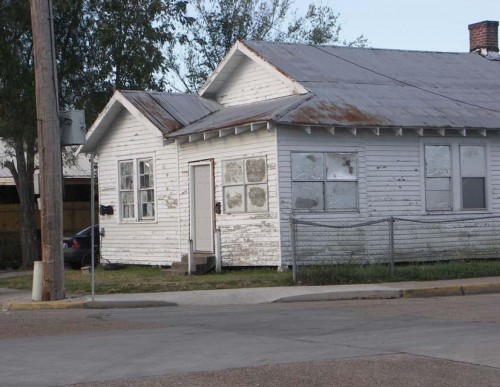Tuesday, Nov. 16
November 16, 2010
Neighbors angered over blight
November 18, 2010In the aftermath of the Deepwater Horizon explosion, millions of dollars are being spent to convince the skeptical national public to trust reports of incorruption of Louisiana seafood.
However, a South Louisiana seafood supplier says the paranoia is beginning to lessen in correlation to the lack of foreign seafood production.
The Louisiana Department of Wildlife and Fisheries and the Department of Health and Hospitals have reopened commercial fishing areas after clearances from the National Oceanic and Atmospheric Administration and the Food and Drug Administration, but the national public remains wary of the reports.
Gov. Bobby Jindal announced an agreement with BP on Nov. 1 that will allocate $30 million to LDWF for marketing Louisiana seafood. Spreading the word doesn’t end there.
“In fact, we’re trying to contact Oprah Winfrey right now and have a seafood boil on her show,” Lafourche Parish President Charlotte Randolph said. “We haven’t received an answer yet, but we want to make sure as many people as possible know that the seafood is not only edible and not tainted at all, but it’s the best in the world.”
Although the aftermath of the spill continues to hamper business, as of November, prices are up as much as 200 percent from 2009, according to Grand Isle seafood supplier Dean Blanchard
“For a while, people didn’t want to buy the shrimp, and it looks like now, that people are opening up to the idea using Gulf shrimp again, hopefully,” Blanchard said.
“[Seafood paranoia] is going away with the bigger customers, but it’s going away because they don’t have another choice,” he continued. “They don’t have another product. … We are lucky to get the larger shrimp [in the Gulf] that they don’t have on the market.”
Ten- to 12-inch shrimp, which the supplier purchased for $2.00 per pound in 2009, are currently selling for $4.00, Blanchard said. The increases continue: 10-15 inch shrimp from $1.60 to $3.20, 16-20 inches from $1.50 to $2.60 and “the smaller stuff might be up 10-20 percent.”
Blanchard said the antibiotics in foreign shrimp ponds has worn off, which has diseased the farms to the point that the imported shrimp that has increasingly flooded the American market in recent years is missing.
On the other hand, the Gulf of Mexico shrimp population rebounded from a down year, which Blanchard attributes to a colder than usual winter season.
“We knew that we were going to have a high price, and we knew we were going to have a bump of crop of shrimp because every time you have a cold winter, you have a bump of crop of shrimp,” Blanchard said. “We had one of the coldest winters on record last year, and basically, that’s what’s happening. The [market] shortage is out, short on big shrimp. Big shrimp are steadily going up.”
The supplier estimates that only 10 to 12 percent of the typical trawlers are at work while the remainder is still waiting on their oil spill claims to be recognized by the Gulf Coast Claims Facility. Still, Blanchard is purchasing as much shrimp as he did last year, a total that would be raised if the majority of shrimpers wasn’t waiting at home fearing that their present-day earnings would be deducted from their claims.
“You know, if they would have took the last five Nobel Prize winners and put them all together and say ‘Your only job is to screw up Dean Blanchard Seafood’, they couldn’t have done a better job than BP,” Blanchard said. “I know BP didn’t try to do it, but everything they did and everything they are doing is just killing our industry.”
While the industry as a whole is suffering, some fishermen were able to secure income by participating in the clean-up efforts with the BP Vessels of Opportunity program.
Randolph is optimistic shrimpers will return to normal activity next year.
“Fisherman, fortunately, were a major part of the spill clean up for the most part,” she said. “There were some left out of the process and we’re still working on those issues, but I got some statistics the other day where there were 258 vessels hired with the VoO, not all fisherman. They finally called in only fisherman at the end. But they earned $53 million over the term of six or seven months, which averaged out to about $200,000 per boat.
“I’m hoping that that will tide them over until next year. Quite frankly, if the seafood out there right now is deemed edible by EPA and FDA and every other organization out there that tests, then I think by next year we should be able to resume normal activity. I’m very optimistic.”
In addition to the $30 million in marketing money, BP allocated $18 million to be spent over three years for seafood testing of oil, dispersants and other spill-related impacts across the U.S. Gulf Coast. The funds will reset each time a fishing area is closed due to an oil impact.








